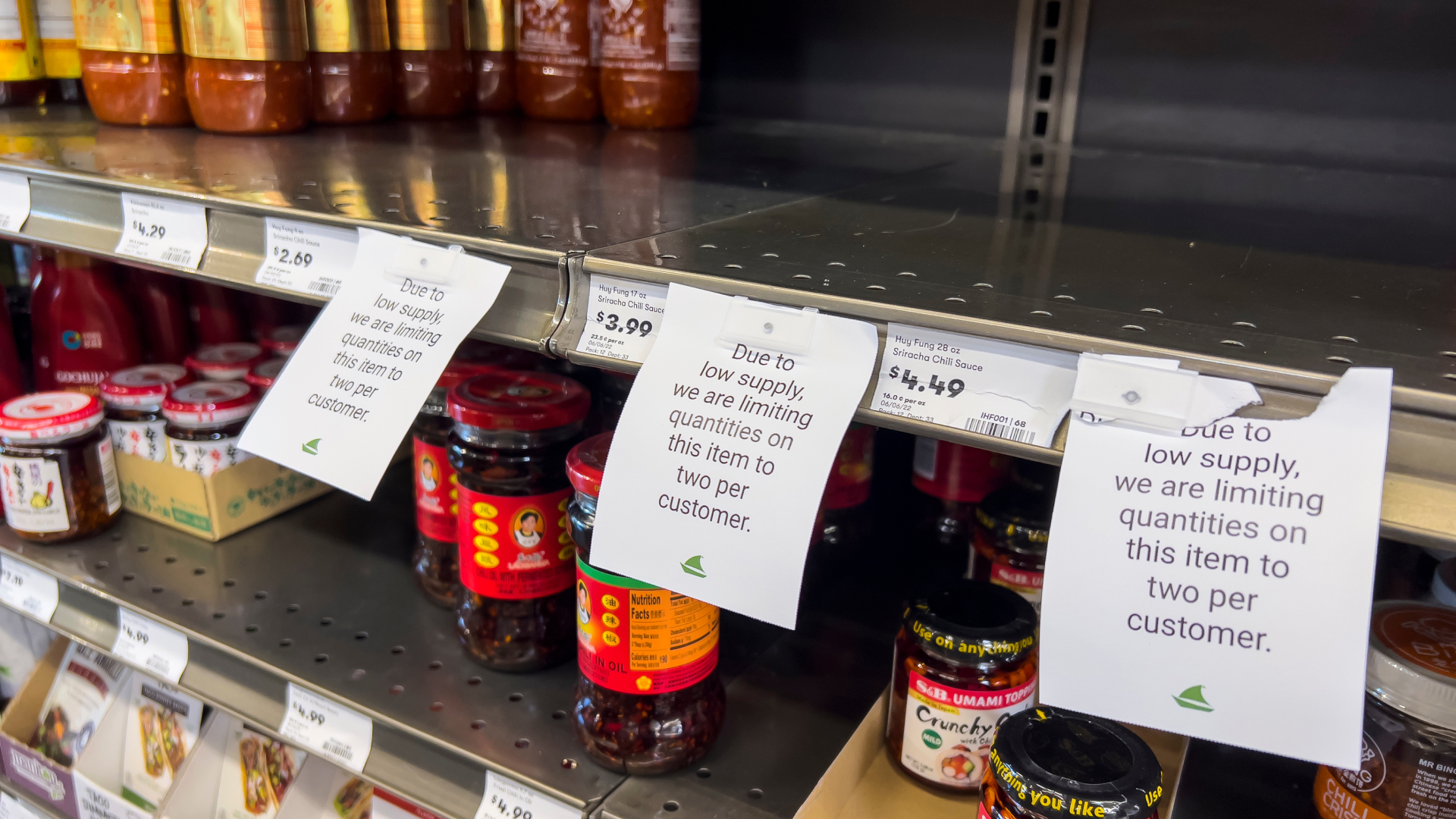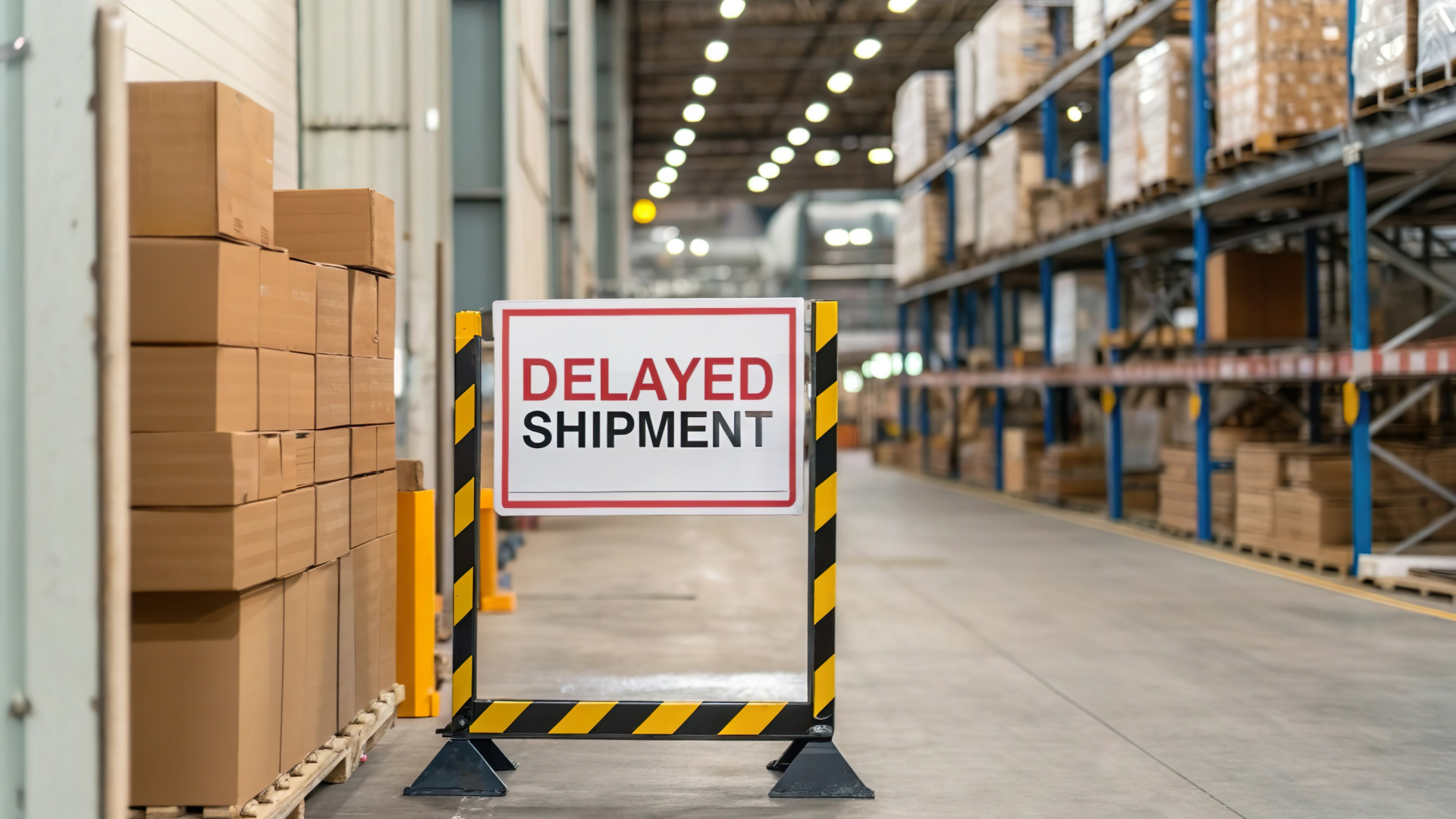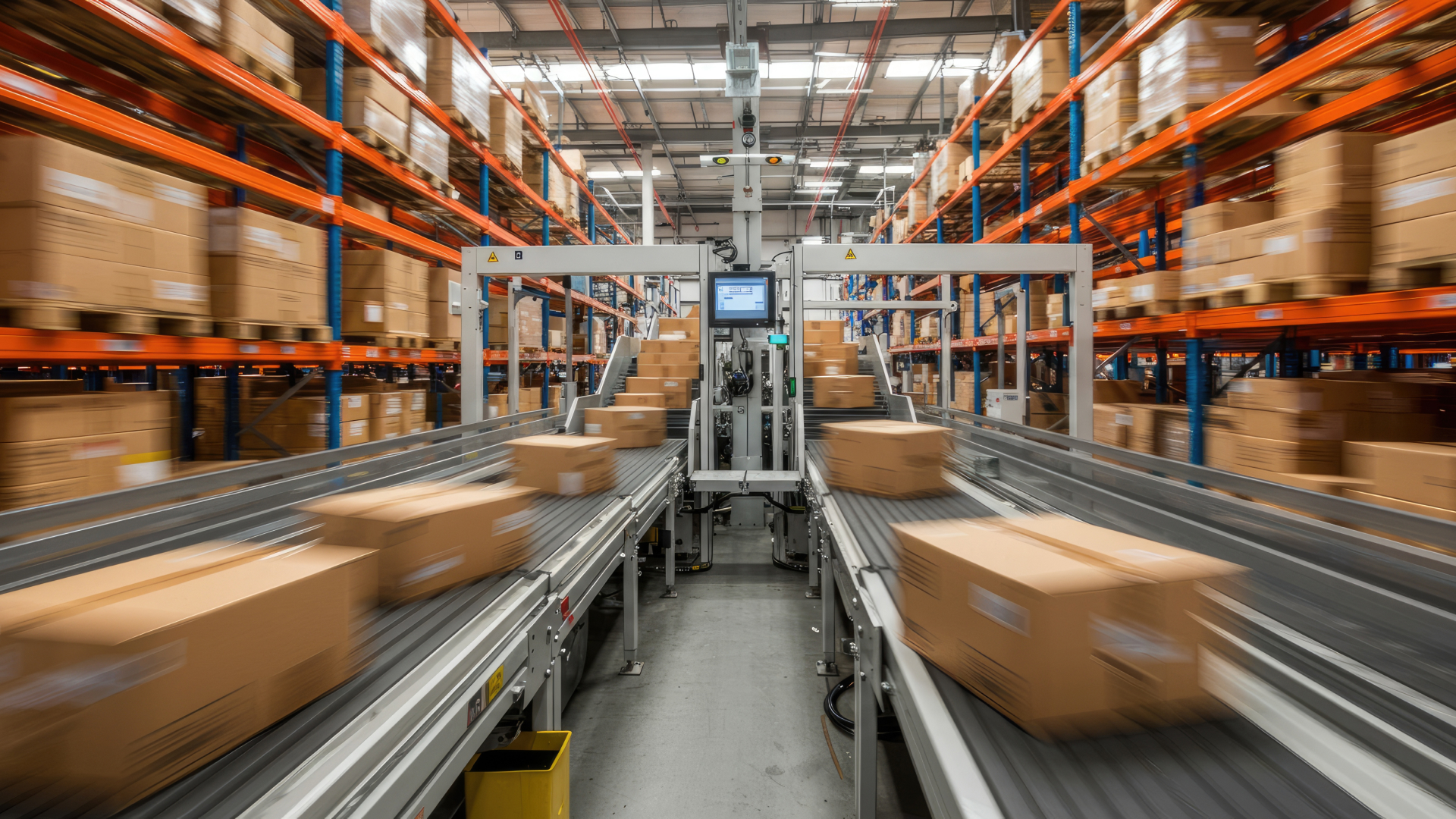Supply Chain Industry Challenges in 2025 and Beyond
July 15, 2025

Supply chain challenges can cause pain for business operations as well as revenue and profits. But with so many factors outside your control, how can you prevent disruptions to the flow of goods and services? To mitigate risks and maximize resilience, you first need to understand what causes global supply chain challenges. Then, you need to be ready to respond quickly and efficiently.
In this article, you’ll learn about the top supply chain industry challenges in 2025, what factors contribute to disruptions and how to overcome supply chain challenges by thinking strategically.

What Are the Main Supply Chain Challenges in 2025?
The last few years have been tumultuous for the global economy, with plenty of factors contributing to problems in supply chain management. Here are the top challenges in 2025:
- Inflation and Cost Control
- Labor Shortages
- Cybersecurity Threats
- Long-Term Pandemic Effects
- Political Tensions
- Demand Volatility
- Natural Disasters

Inflation and Cost Control
Inflation leads to rising costs at every stage of the supply chain, from production to distribution. More expensive raw materials and labor drive up production expenses as well as the cost of keeping inventory on hand. When prices are unstable, manufacturers tend to stockpile raw materials, which is an added expense that’s often passed on to customers.
Higher energy and fuel costs drive freight and transportation fees up, straining the supply chain and slowing down delivery times. Inflation also leaves consumers with less disposable income, which impacts supply and demand.
Labor Shortages
The labor market dynamic has changed significantly in recent years, with ongoing shortages directly affecting the supply chain. Rapidly increasing salaries, changing demographics and pandemic-driven shifts (e.g., quiet quitting and widespread relocation as a result of new work from home initiatives) have all contributed to workforce shortages.
Many businesses are struggling to fill knowledge worker roles as well as skilled task-based roles like delivery truck drivers and warehouse workers, which are all essential to supply chain management. Wherever there’s a shortage of labor, supply chain disruptions can happen.
Cybersecurity Threats
In the digital era, cybersecurity threats are fast-moving and rampant. Cyberthreats including ransomware attacks, data breaches and malware infections can all disrupt the supply chain by impacting the IT systems that suppliers and distributors use to manage inventory, process orders and oversee logistics.
Any downtime resulting from a cyberattack leads to delays and lost revenue. Data breaches can significantly affect a company’s reputation, especially if their customer or supplier data is compromised. And any financial losses resulting from cyberattacks adds to the fallout, further disrupting the flow of goods and services.
Long-Term Pandemic Effects
When the pandemic struck in 2019, manufacturing was disrupted around the world. Lockdowns and closed borders halted the flow of raw materials as well as finished goods, slowing down production times with long lasting impacts. Many factories and businesses were shuttered for good.
Pandemic-triggered inflation is still being felt today, impacting prices for manufacturers and distributors as well as consumer demand. Transportation delays as a result of high fuel costs and material/worker shortages further disrupt the supply chain, driving up costs for everyone.
Geopolitical Tensions
In a global economy, problems in one part of the world can have far-reaching effects. Geopolitical tensions across the globe reduce access to raw materials, slowing or preventing transportation of goods and driving up costs. Sanctions and trade restrictions can disrupt the flow of goods and drive up expenses. Port closures, potential shortages and supplier instability for operations in impacted areas are all contributing factors, too.
Demand Volatility
Many of the factors mentioned above contribute to demand volatility, including geopolitical tension, inflation, labor shortages, and the long-term effects of the pandemic. With so much political and economic instability in the world, market demand has become unpredictable. This makes it hard to accurately forecast demand, which in turn makes it hard to plan efficiently. Inventory management, production planning and customer satisfaction are all affected. Economic instability also leads to rising costs, which leads to more supply chain challenges.
Natural Disasters
Climate change has increased the frequency and severity of natural disasters, including extreme weather like drought, floods and wildfires. Snowstorms, tornadoes and hurricanes are also becoming more frequent and more extreme. Anytime an area is affected by one of these events, it disrupts the flow of goods in that area.
For example, flooding in the Rhine River region of Germany has left shipping containers stranded in the harbor multiple times in recent years, while extreme weather in Texas shut down the power grid, forcing semiconductor plants to close, and triggering a worldwide shortage. The growing climate crisis poses a major threat to global supply chains.

Understanding the Causes of Supply Chain Issues
Now let’s look at what’s behind the majority of global supply chain challenges in 2025.
- Inadequate Technology
- Talent and Training Gaps
- Ineffective Forecasting
- Regulatory Changes
- Labor Disputes
- Economic Downturns
Inadequate Technology
Technology is essential to a well-managed supply chain. When you don’t have the right tools, lots of challenges pop up. Lack of visibility into inventory and shipments makes it hard to know when to restock. Manual data entry is prone to errors, which can result in shipment delays and other billing and inventory issues. For larger operations, analytics and management are essential. If you’re relying on outdated technology, you’re not getting the real-time insights you need to succeed.
Talent and Training Gaps
A worldwide lack of skilled workers is leaving supply chain industry positions vacant from planning all the way through to production, creating a ripple effect that has far-reaching effects for many industries. According to one recent industry report, 57% of supply chain leaders say hiring and training qualified workers is one of their biggest challenges. Lack of talent and training leads to operational inefficiencies, poor decisions and quality issues that can directly influence customer satisfaction.
Ineffective Forecasting
Good forecasting is essential for effective supply chain management. When your forecasting tools aren’t up to scratch, you can run into inventory issues like over- or under-stocking goods and materials, production planning problems and increased expenses, all of which make it difficult to keep up with customer demand and respond to unexpected changes.
Regulatory Changes
Regulatory changes, often related to trade policies, can hurt the supply chain by adding to compliance requirements and procedures, which increases costs and complexity. If your suppliers and/or manufacturers don’t meet new requirements, you may have to rethink your sourcing strategy, which can lead to delays and may drive up costs. For organizations operating across multiple markets or jurisdictions, keeping up with multiple regulatory bodies adds to the challenge.
Labor Disputes
Labor disputes significantly disrupt the supply chain by slowing down production and delaying (or preventing) on-time deliveries, leading to inventory shortages as well as an inability to fulfill orders in a timely manner. Over time, these disruptions and delays drive up costs, compounding the problem and doing serious damage to your brand reputation. If you hear about a potential upcoming strike that could affect your supply chain, it’s important to plan ahead to minimize the fallout.
Economic Turmoil
Economic uncertainty triggers unexpected changes in demand, which are difficult to predict and respond to. If demand spikes up, you may find yourself with an inventory shortage. If it suddenly plummets, you may be overstocked. Fluctuating prices for raw materials and transportation can create cash flow challenges, and if you pass the increased prices on to your customers, you might lose their loyalty.

How to Avoid Supply Chain Disruptions
While you can’t control the global economy or geopolitical conflicts, there are some simple steps you can take to avoid supply chain disruptions or, at the very least, be prepared when they strike.
- Create Risk Mitigation Strategies
- Invest in Technology
- Diversify Suppliers
- Stay Up to Date with Relevant Legislation
- Maintain Business Liquidity
- Improve Supplier Relationships
Create Risk Mitigation Strategies
Start by identifying potential supply chain disruptions, like the ones we’ve covered here, and determine which are most likely to affect your operation. Then, make a plan for how you will deal with them if they actually happen. For example, what will you do if delivery drivers go on strike? Should you stockpile a material that may become hard to find due to a looming trade war? Scenario planning can help. Be sure to prioritize the risks with the greatest potential to impact your supply chain.
Invest in Technology
Relying on outdated point solutions or (worse) spreadsheets hurts your ability to be resilient in the face of supply chain challenges. Invest in modern systems that are agile, intelligent and provide reliable, real-time data. This will help you accurately forecast, plan and pivot when uncertainty arises.
Diversify Suppliers
Relying on a single supplier, or a group of suppliers that are all located in the same geographical region, puts your operation at risk if something disrupts the flow of goods in that region. By sourcing goods, services and materials from a diverse portfolio of vendors and suppliers, you can minimize the risk of supply chain disruptions due to regional conflict, natural disaster, economic uncertainty or changing regulations. If transportation is an issue, try to source locally.
Stay Up to Date with Relevant Legislation
Keeping up with the latest government regulations and industry standards is essential to maintaining a steady flow of goods and services. Depending on your industry and location, this could include labor standards, ethical sourcing requirements, environmental regulations, safety and quality standards, and international trade regulations. To maintain compliance, work closely with suppliers, vendors and partners, put processes in place to monitor compliance, and invest in technology that helps you keep up; for example, by maintaining data privacy or a clean audit trail.
Maintain Business Liquidity
To ease any potential supply chain disruptions, make sure your business has enough available cash to pay short-term bills and cover any unexpected expenses that might come up, like delivery delays, increasing raw materials costs or the need to source goods from a new supplier or region. Maintaining a cushion of liquidity will act as a safety net while you weather any unexpected storms.
Improve Supplier Relationships
Your supply chain is only as strong as your network. It’s important to maintain good relationships with every one of your suppliers, manufacturers, distributors and retailers, because you never know when you might need to rely on any link in the chain. Check in with them regularly, be clear and consistent in the way you communicate and look for ways to make the relationship better for them as well as for you. At the end of the day, every business is built on relationships, so invest your time and effort wisely.
How Will the Supply Chain Change in the Future?
Finally, let’s look at some of the changes on the horizon that are likely to impact future supply chains.
- Digitization
- Automation
- Artificial Intelligence
- New Transportation Technologies
Digitization
As the process systems used across the supply chain become increasingly digitized, supply chain management will become smarter and more efficient. Digitization enables more accurate forecasting, integration with other core systems to provide greater visibility and agility, and access to real-time analytics to power smarter business decisions. All of these factors will make it easier to be agile and resilient in the face of supply chain challenges.
Automation
Automation is already significantly increasing efficiency across the supply chain, and will continue to do so as it’s implemented even more widely. Automating manufacturing processes creates major operational efficiencies, while automating repetitive tasks like processing orders and managing inventory can minimize human errors and reduce labor costs.
Artificial Intelligence
Artificial intelligence (AI) and machine learning can analyze vast amounts of data to uncover patterns, trends and opportunities to improve. In the global supply chain industry, AI can help to optimize logistics, delivery routes, inventory management and forecasting accuracy, all of which help to reduce waste and maximize profitability.
New Transportation Technologies
It may sound like science fiction, but autonomous (self-driving) vehicles are no longer the stuff of fantasy, and delivery drones are already here. While some of these futuristic modes of transportation are still in the development stage, they have the potential to dramatically change the supply chain by accelerating delivery, increasing operational efficiency and reducing costs, making supply chains of the future more agile and responsive.
How Ernest Can Help Businesses Navigate Supply Chain Issues
As a nationwide organization serving clients with supply chains that span the globe, Ernest is uniquely positioned to help you avoid supply chain disruptions and manage challenges.
In addition to our Ernest Managed Inventory service, we have expertise in every aspect of supply chain management and logistics. We can help you keep tabs on industry trends, establish strategies to stay ahead of the curve and simplify fulfillment thanks to our nationwide network of warehouses.
Let’s talk about how Ernest can help you maintain a steady flow of products into and out of your operation.
Packaging Design






